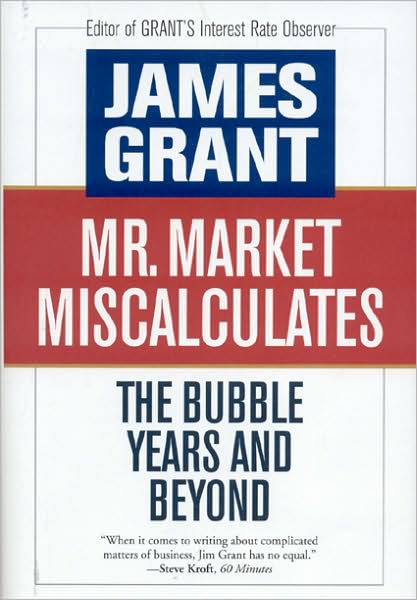I am a risk manager first, and a profit maker second.? I tend not to trust solutions that are “magic bullets” unless there is some barrier to entry — why can you do it, and few others can?? Knowledge travels.
So, regarding the “endowment model” of investing, I have been partly a believer, and partly a skeptic.? A believer, because endowments do have the ability to invest for the long-term, and not everyone else does.? A skeptic, because many endowments were taking on too much illiquidity.
Liquidity is an underrated factor for investors who have charge over portfolios that have a long-term stable funding base.? I had that advantage once, as the main investment manager for an insurer the had a large portfolio of structured settlements.? In insurance liabilities, nothing is longer than a portfolio of structured settlements.
Buy long-dated debt?? Illiquid debt?? If the pricing is right, sure; you should have to pay to rent the strength of a strong balance sheet, where the funding is intact.? WHen managing that company’s portfolio I didn’t have to worry about a run on the portfolio, because I kept more than enough liquid assets to satisfy the demands of policyholders should they decide to surrender.
Pushing it Past the Illiquidity Limit
I decided to write about the endowment model after reading this article, of which I will quote the first paragraph:
There has been much written in the popular press lately about the failures and even the “death” of the endowment model. The discourse regarding this matter has been surprisingly simplistic, naive and exceedingly short sighted. As was the case with Mark Twain, reports on the death of the endowment model have been greatly exaggerated. Let’s start with the facts. The “endowment model” practiced by most of the big university endowments and many big foundations (but also by some astute smaller endowments and foundations) has overwhelmingly outperformed virtually all other models over any reasonable time period, and has done so for a very long time now. There is no single model, mode or manner of investing that outperforms in every environment and over every time period, and the endowment model of investing was never predicated on being the exception to this obvious reality. In fact, endowments’ time horizons are as long as any investor’s horizon, and hence are strictly focused on the long term. This is a huge advantage because there is clearly a significant liquidity premium to be captured by investing long term, not to mention the ability to better avoid the chaotic noise and behavioral finance mistakes that arise with a short term environment and outlook – especially in volatile markets.
The idea here is that you will obtain better returns if you can focus out to an almost infinite horizon — after all, endowments will last forever.? There is an edge to having a long investment horizon, but there are still reasons to be cautious, and not aim a majority of investments in such a manner that means that they cannot be touched for a long time.
Here is my example: Harvard.? At the end of fiscal 2008, those that managed Harvard Management Company were heroes.? The largest university endowment, stupendous returns, etc.? Who could ask for more?
The risk manager could ask for more.? With an endowment of nearly $37 billion in June of 2008, only $16 billion was liquid assets.? Of that $16 billion, $11 billion was spoken for because of commitments to fund limited partnerships.? Harvard also had $4 billion in debt, not all of which was directly attributable to the endowment, but still would be a drag on the total Harvard entity.?? If this is representative of the endowment model, let me then say that the endowment model accepts illiquidity risk more than most strategies do.? Even after their great investment successes, Harvard did not have enough liquidity.
Then Came Fiscal 2009 — We’re out of liquid assets!
My guess is that sometime in the fourth quarter of calendar 2008, the powers that be at Harvard concluded that they were in a liquidity bind — negative net liquid assets, and there is a need for liquidity at Harvard, to pay for ordinary operations, as well as expansion.? Thus they moved to sell illiquid investments, and take a haircut on them.? They reduced their forward commitments by $3 billion.? They also raised $1.5 billion in new debt, $500 million worth of 5-, 10-, and 30-year debt each.
This is clear evidence of a panic, and an indication that the portfolio was too illiquid.? What else might indicate that?? Well, Harvard had to scale back capital projects, and had a round of layoffs of ancillary personnel.
The idea of an endowment is that you can run your institution without fear of the future.? But that also implies that those endowed will not make abnormal demands on the endowment.? That applies to the amount disbursed and the liquidity of the underlying investments.
Now at the inception of fiscal 2010, Harvard is much in the same place as it was in 2009.? Net of debt and commitments, Harvard’s endowment does not have liquid assets on net.? (My estimates: $12.5 billion of liquid endowment funds, $8 billion of funding commitments, and $5.5 billion of debt.)? Granted, it was wise to move the endowment’s cash policy target from -5% to -3% to +2% over the past two fiscal years.? Even if cash doesn’t return anything, it is still valuable.? You can’t pay professors with shares of a venture capital partnership.
The Horizon Isn’t Infinite
This brings me to my penultimate point, which is that the investment horizon for endowments is different for other investors in degree, but not in kind.? The horizon for an endowment is infinite only under conditions of permanent prosperity.? Well, anyone can invest forever under conditions of permanent prosperity.? The forever-growing investments can be borrowed against.
The investment horizon must take into account the possibility of a depression, or at least a severe recession or war, if you want to have an endowment that will truly last forever.? There has to be cash and high quality liquid debt adequate to provide a buffer of a few years of expenses.? That will give the institution more than adequate time to adjust to the new economic conditions.
Most college endowments that have not gone overboard on illiquid investments and don’t have a boatload of debt probably don’t have to worry here.? But for those that bought into the alternative investments craze, the idea of invest for forever must at least be tempered into something like 20% of our investments exist to buffer the next 5 years, and the other 80% can be invested to the infinite horizon (maybe).? That’s a more realistic approach to endowment investing, akin to a speculator paying off his mortgage and having a year of savings in the bank before beginning a trading career with capital beyond that.
Alternative Investments are not Alternative Anymore
There is another reason, though, to be cautious about illiquid investments.? With any new alternative investment class, the best deals get done first, and wow, don’t they provide a thundering return!? Trouble is, knowledge travels, and success breeds imitators.? The imitators typically bring deals that will have lower returns or higher risks than the original deals.? But the pressure of additional money into the alternative illiquid investments force progressively more marginal ideas to get done as deals.? Also, mark-to-market returns of earlier investments get marked up, giving them an even more impressive return, which attracts more capital to the investment class.
Eventually deals get done that make no sense, but the momentum of demand carries the asset class until returns of newer deals prove to be negative.? That? gets the mark-to-market process moving in reverse, and demand for the “no longer new” investment class declines.? In some cases, investors will try to get out of funding commitments, and even try to sell their interests to a third party, usually at a significant concession to the hard-to-define fair market value.
Eventually enough capital exits the class, inferior deals get written down, and the once new investment class might still be labeled “alternative,” but has entered the mainstream, because it has been around long enough to go through a failure cycle.? The now mainstream but still illiquid investment class is near a normal size versus the investment universe, and should possess forward-looking returns that embed a risk premium to reflect the disadvantages of illiquidity.? Also, the now mainstream investment becomes more correlated with risk assets generally, because the actions of institutional investors chasing past returns is common to much of what qualifies for asset allocation.
Summary
- Liquidity is valuable, and should not be surrendered without proper compensation.
- Alternative investment classes eventually go through a mania phase, and then go through a failure cycle.
- After failure, they tend to be more correlated with other risk assets.
- Endowments can indeed invest for a long horizon, but should keep sufficient liquid assets on hand to deal with significant market corrections.
- Harvard’s endowment would be vulnerable if we had a repeat in the near term of what happened in fiscal 2009 because of its low net liquidity.
Investing is a business where the smarter you are, the more it pays to be humble and recognize risk limits.? Major universities and colleges (and defined benefit plans) should review their asset allocations and stress-test them on scenarios where liquidity is in short supply.? Better safe than sorry.
Articles on the Harvard Endowment
6:46 PM Update — So I write this, and Morningstar comes out with a good piece like this one.? So it goes.




